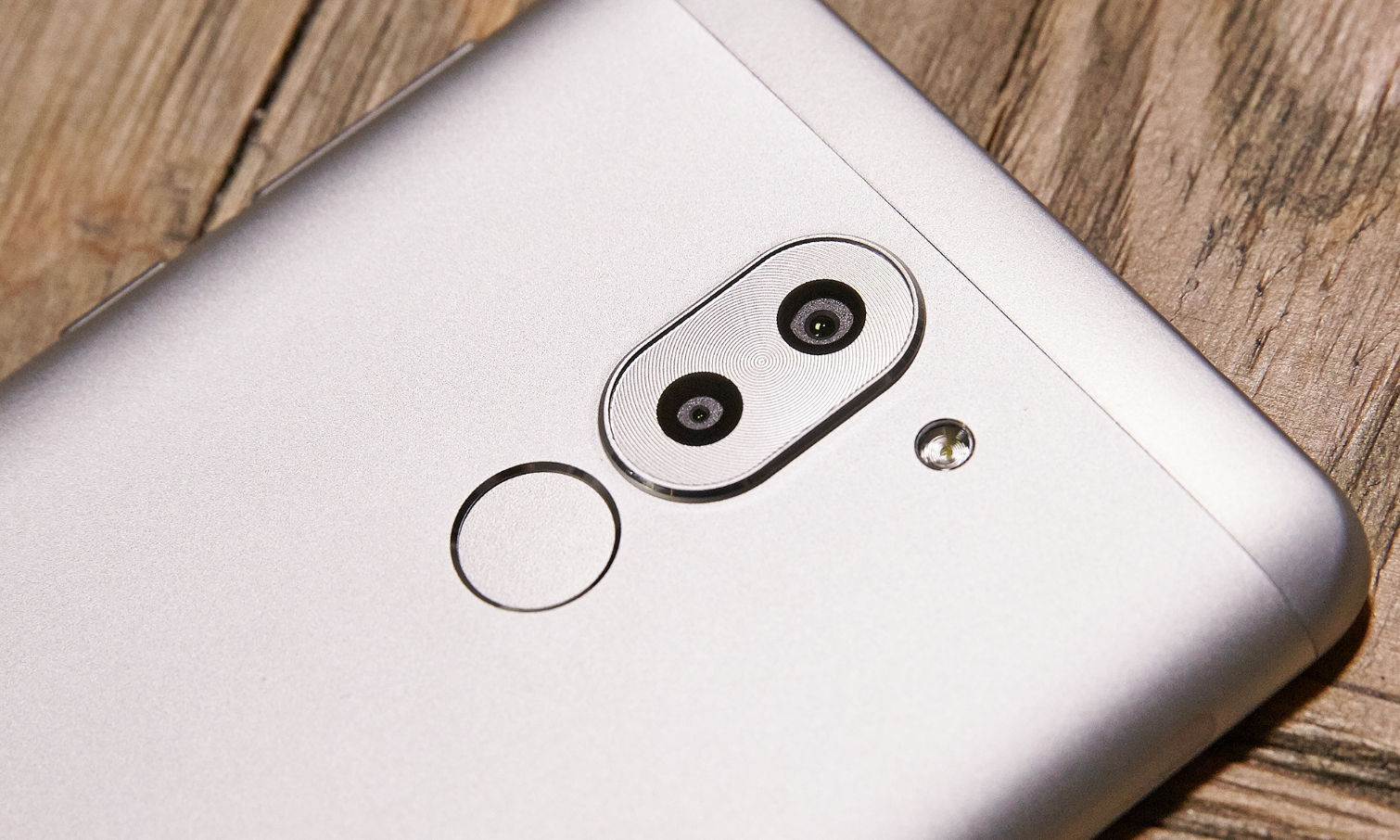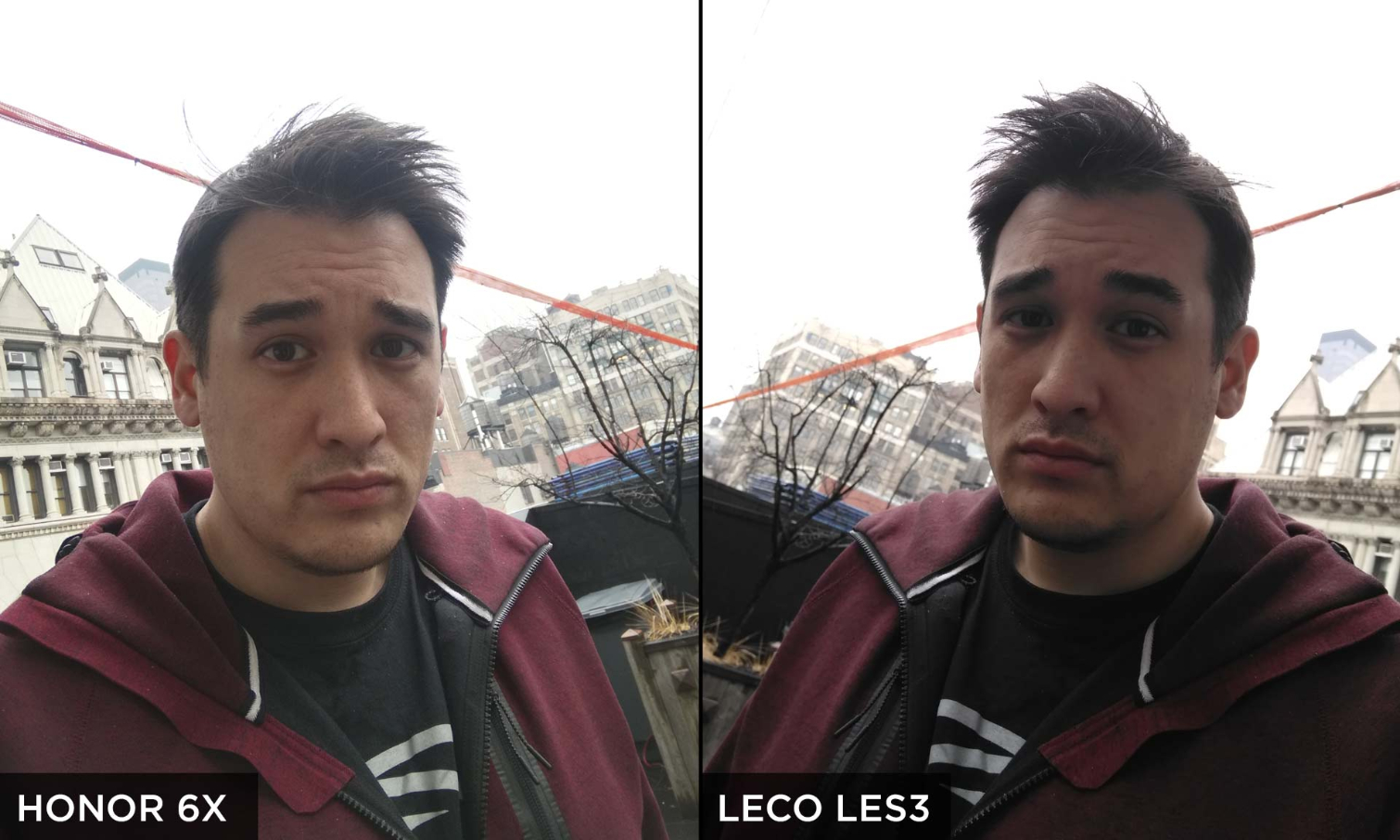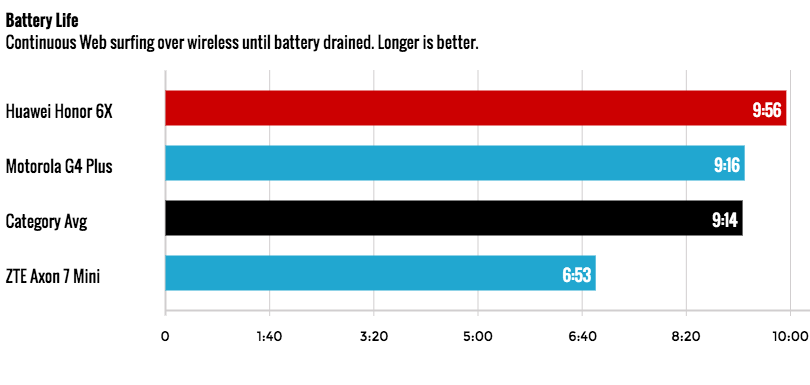Tom's Guide Verdict
The Honor 6X goes all in on value, giving you dual rear cameras, a fingerprint sensor and other features usually reserved for higher-priced phones.
Pros
- +
Attractive price
- +
Dual rear cameras
- +
Bright, 5.5-inch FHD display
- +
Solid performance for the price
Cons
- -
No USB-C
- -
Rear panel isn't fully metal
- -
Doesn't ship with Android 7.0
Why you can trust Tom's Guide
Whatever you think about trickle-down economics, trickle-down tech — in which high-end features make their way into lower-cost phones over time — is a real thing. The Honor 6X is a perfect example of that. Just two years ago, budget phones struggled to get the basics right and were so ugly you'd be embarrassed to pull one out in the wild. But now, the Honor 6X offers a premium-feeling design with a curvy metal back, dual rear cameras and a big, bright 5.5-inch full-HD screen, all for just $250. The highlights don't end there, because the 6X also comes with a built-in fingerprint reader and offers nearly 10 hours of battery life.
Even with some dated features — the 6X includes a micro USB port and an older version of Android — Honor's latest mid-tier phone is one of the best smartphone values around.
UPDATE: Thanks to a new update from Honor, the 6X can now be upgraded to Android 7 running on Huawei's EMUI 5.0. Improvements include a simplified UI, smoother system animations and improved security.
Design: Premium to a point
There's just something about the sense of density that makes a smartphone or any other device feel like a quality product. With a big, 5.5-inch screen sandwiched between a slab of glass in front and a curved, brushed-aluminum panel in back, the Honor 6X definitely has that feel.

A closer look reveals some plastic caps on the phone's top and bottom, which detract from the 6X's otherwise premium-feeling design, though they're not deal breakers. I also wish Huawei had balanced out the top and bottom bezels a little better. The chin looks slightly larger than the top.

In back, you'll find the Honor 6X's fingerprint reader, which might look a little small. But I never ran into any problems locating it by feel, and it never failed to recognize my digits. If you do take advantage of the fingerprint reader's handy gesture controls, its small size reduces inadvertent swipes.
The Honor 6X still has a 3.5mm headphone jack, an important feature at a time when that port is disappearing from other phones.
Get instant access to breaking news, the hottest reviews, great deals and helpful tips.
Measuring 5.94 x 3 x 0.32-inches and weighing 5.71-ounces, the Honor 6X is actually a tiny bit larger than the similarly priced LeEco LeS3 (5.95 x 2.92 x 0.3-inches and 5.4-ounces), even though in the hand, the 6X feels more compact.
MORE: Best Smartphones on the Market Now
Cameras: Two lenses are better than one
If you're like most people, the filters you use regularly are the ones in apps like Snapchat and Instagram and not those included in your phone's Camera app. So instead of waging a losing battle by piling on more filters of its own, Honor decided to go after the kind of functionality that filters can't match. That's why the 6X has two rear cameras instead of one.

There's a 12-megapixel main camera on the back of the phone that's supported by a 2-MP black-and-white camera. The 12-MP main camera takes photos as normal, while the 2-MP shooter looks at distances between objects, allowing you to adjust your depth of field on the fly. This lets you shoot pictures with shallow focus, so your subject seems to pop out of the picture. While this feature doesn't work as smoothly as the Portrait mode on the iPhone 7 Plus, it's pretty impressive for a phone that costs $250.

In practice, the depth-of-field adjustment makes it easy to put extra emphasis on your subject, but the 6X's software could definitely use some additional fine-tuning. When I used shallow depth of field to shoot an apple, blurriness crept in from the sides and made the subject look less sharp, although the background did feature that soft bokeh effect that folks are often looking for.

During regular use, the Honor 6X's 12-MP cam did a better job than the camera on the LeEco LeS3 at capturing the cavernous architecture of the Oculus structure inside the World Trade Center. This was because the Honor 6X offered a slightly better exposure and warmer, more pleasing white balance.

However, indoors in the midafternoon light, the Honor 6X struggled somewhat, opting to set an exposure level based on the light coming in from the window, rather than the objects in front. This resulted in a darker and grainier photo than what we got from the LeS3's cam; you can touch the screen to change focus-point and exposure, though that feature is available on most smartphones.

At night, the Honor 6X redeemed itself, capturing a picture that's significantly sharper and less blotchy than the LeS3's photo, which looks yellow and faded in comparison.

Using the 8-MP front camera, the 6X's shot was nearly as sharp as the LeS3's pic. But the 6X wins here overall, thanks to better exposure, which makes it much easier to see details in my face and clothes.
For those looking to shoot some videos, you're limited to 1080p at 30 frames per second, instead of 60 fps like you'd get on a more expensive camera. Video quality looked similar to that of photos, which is to say better than the 6X's price tag would suggest, although a little image stabilization would improve the finished shot.
MORE: These Smartphones Can Replace a Compact Camera
Display: Bright for a budget phone
Even on budget phones, it's full HD or bust these days, and with Honor 6X's 5.5-inch IPS screen featuring a 1920 x 1080 resolution, this phone totally delivers. The screen meets or exceeds the display results for the average smartphone, which is impressive performance at this price tag.

For brightness, we measured the 6X at 444 nits of light, which is way better than the ZTE Axon 7 Mini's subpar score of 317 nits, slightly better than the 431-nit smartphone average and about the same at the LeEco Le S3 (440 nits). However, if you're looking for an affordable phone with a truly bright display, the $249 Moto G4 Plus is still tops, at 530 nits.

For color accuracy, the 6X's Delta-E rating of 3.28 was once again better than the smartphone average (4.1), as well as the scores of the LeEco (4.99) and the Axon 7 Mini (3.92). (Numbers closer to 0 are better in this test). Once again, the Moto G4 Plus sported superior numbers, with a Delta-E rating of 2.33.
The one area where the Honor 6X fell a bit flat was color range. Covering 114 percent of the sRGB gamut, the 6X trails the LeEco Le S3 (137 percent) and the ZTE Axon 7 Mini, whose OLED screen hit 177 percent. The Moto G4 Plus' color range was more limited.
Performance: Not much trade-off
On the performance front, the Honor 6X counters phones that have midrange Qualcomm processors by offering Huawei's own octa-core Kirin 655 CPU, 3GB of RAM and 32GB of onboard storage. The 6X also includes a dual SIM tray, whose second slot can also be used for microSD cards in case you need more room for apps and media.
Compared to similarly priced phones, the 6X doesn't give up much speed, either in real-world use or when running synthetic benchmark tests. Even when I played the new Star Wars: Force Arena game, action remained pretty snappy, although I did notice a hint of lag during more intense moments like when a TIE fighter swooped down to do a strafing run.

On Geekbench 4, which measures overall system performance, the Honor 6X scored 3,336, topping the scores of both the average smartphone (3,303) and the LeEco LeS3 (2,740).
On the JetStream 1.1 JavaScript test, which evaluates web-browsing performance, the 6X's score of 27.01 topped the Moto G4 Plus' mark of 22.56 (higher scores are better). However, the average smartphone fared better, at 37.16, as did the LeEco LeS3 (45.56) and its Snapdragon 652 SoC.
MORE: Best Cheap Unlocked Smartphones
Finally, the Honor 6X sports some pretty strong graphics cred for a mid-tier phone, with a score of 11,897 on 3DMark's Ice Storm Unlimited benchmark. That's about 20 percent higher than the ZTE Axon 7 Mini (9,785) and Moto G4 Plus (9,719), though still short of the Le S3's mark of 16,954 and the 17,089 smartphone average.
Battery Life: Nearly 10 hours

Honor claims the Honor 6X can last two days on a charge in certain conditions. It didn’t come close to that in our test, in which we set the phone to continuously surf the web on a 4G LTE network (AT&T's, in this case). Still, the Honor 6X lasted 9 hours and 56 minutes, which is nothing to sneeze at. That's almost 45 minutes longer than the 9:14 smartphone average, and it also tops the Moto G4 Plus' time of 9:16. Even the slightly more premium (and expensive) ZTE Axon 7 Mini pales in comparison, lasting 3 hours less than the Honor 6X.
The depth-of-field adjustment makes it easy to put extra emphasis on your subject, but the Honor 6X's software could definitely use some fine-tuning.
Huawei says the Honor 6X offers 5V/2A fast charging, which adds a little bit of speed to your charging but shouldn't be confused with Qualcomm's Quick Charge technology.
Software and OS: An aging Android
Out of the box, the Honor 6X runs the EMUI 4.1 fork of Android, which is a bit problematic. Unlike EMUI 5, which comes on Huawei's flagship Mate 9 phablet, EMUI 4.1 is based on Android 6.0 instead of the more up-to-date Android 7.0. Huawei has said it's working on bringing the latest version of Android to this phone, though the company hasn't set a timetable or announced any definitive plans.

That means you won't get some of the latest Android Nougat features, like multiwindow mode or a revamped notifications tray. Aside from that, things are pretty straightforward. EMUI functions like a blend between Android and iOS in that you get your usual tile-based app icons and a pull-down shade for notifications and shortcuts, but without the usual Android app drawer on bottom.
MORE: Smartphones with the Longest Battery Life
I do like that the 6X comes with a theme app so you can customize the look of your home screen. Honor's gesture-recognition software lets you navigate your photo gallery or open apps by swiping different directions on the fingerprint sensor; that's something I wish every phone would offer. But I could definitely do without all the extra preinstalled bloat for apps like TripAdvisor, News Republic and Booking.com.
Bottom Line
Sporting a mostly metal design, a fingerprint reader and nifty dual-rear cameras, the Honor 6X has features that you used to be able to find only on phones twice this price. It offers pretty decent performance and above-average battery life. Unless you're a real power user, the 6X feels just as snappy as phones costing hundreds more.
However, the 6X's plastic top and bottom are constant reminders of this phone's humbler ambitions, and its micro-USB port makes the device feels prematurely outdated, as does the phone's software, which doesn't feature the latest version of Android.
Still, for $250, the Honor 6X is a stupendous value. Unless you absolutely need speedier OS updates (get the Moto G4 Plus) or a more vibrant screen (pick up the Axon 7 Mini), the Honor 6X offers the best overall package out of all its budget-minded competitors. And if Huawei follows through on its promise to bring Android Nougat to the 6X, buying this phone will be a no-brainer.
Sam is a Senior Writer at Engadget and previously worked at Gizmodo as a Senior Reporter. Before that, he worked at Tom's Guide and Laptop Mag as a Staff Writer and Senior Product Review Analyst, overseeing benchmarks and testing for countless product reviews. He was also an archery instructor and a penguin trainer too (really).
